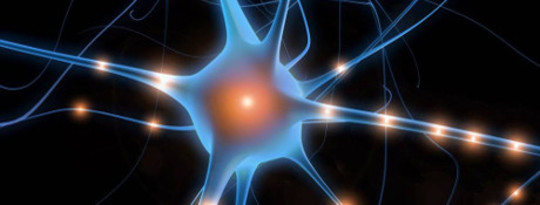
Researchers identified critical steps in the neural pathway for itchiness in mice, showing that it may be distinct from the circuits that allow us to feel heat and pain. The finding may point to new approaches for blocking the sometimes-debilitating itchiness of conditions such as psoriasis, shingles and liver disease.
Sensory neurons carry signals from the skin, muscle and other tissues to the spinal cord—and ultimately the brain, leading to sensations such as pain, itchiness and heat. The details of these sensory pathways remain poorly understood. Scientists have long known that the tips of certain sensory neurons are studded with an ion channel called TRPV1, which is activated by high temperature and capsaicin, the substance that makes chili peppers hot.
To learn more about these neurons, Drs. Mark Hoon and Santosh Mishra of NIH’s National Institute of Dental and Craniofacial Research (NIDCR) took a closer look at mice that lacked TRPV1 neurons. These mice didn’t respond to temperature changes, and they didn’t scratch when exposed to itchy substances such as histamine. rther study of these mice showed that clusters of sensory cell bodies near the spinal cord lacked a small molecule called natriuretic polypeptide b (Nppb). Normal mice, in contrast, had subsets of similar sensory cells that strongly expressed Nppb.
To uncover Nppb’s role, the researchers created genetically engineered mice that lack the molecule. these mutant animals failed to respond to a wide range of itch-inducing substances. Otherwise, the mice appeared healthy and had regular responses to touch, temperature and painful stimuli.
Get The Latest By Email
Further experiments showed that Nppb is essential to triggering the sensation of itch, technically known as pruritus. For instance, Nppb injections near the spinal cord induced scratching in the Nppb-deficient mice. The injections also led to scratching in normal mice, even without activation of peripheral TRPV1 neurons. Nppb proved to be crucial to responses to a wide range of pruritic substances.
Hoon and Mishra examined the spinal cord region where sensory signals are routed onward to the brain. Among these nerve connections, the scientists identified a subset of cells containing the receptor that receives incoming Nppb molecules. Disabling these receptor neurons in the spinal cord seemed to disable the itch circuit, whereas reactions to pain, touch and heat remained intact.
 Collectively, these experiments suggest that Nppb—produced near the spinal cord by a subset of TRPV1 neurons—is the essential, initial trigger of the itch response. e connection to Nppb-receiving neurons in the spinal cord forms a second link in the dedicated itch pathway. Additional analyses found that the molecule gastrin-releasing peptide (GRP), previously implicated as an itch-related signal, represents a 3rd step in the itch response circuitry.
Collectively, these experiments suggest that Nppb—produced near the spinal cord by a subset of TRPV1 neurons—is the essential, initial trigger of the itch response. e connection to Nppb-receiving neurons in the spinal cord forms a second link in the dedicated itch pathway. Additional analyses found that the molecule gastrin-releasing peptide (GRP), previously implicated as an itch-related signal, represents a 3rd step in the itch response circuitry.
The researchers note that it may not be feasible to block Nppb as an itch-control measure for humans. That molecule contributes to the functioning of the heart, kidneys and other organs. Attempts to disable Nppb in the spine may have unwanted side effects.
Now the challenge is to find similar biocircuitry in people, evaluate what’s there, and identify unique molecules that can be targeted to turn off chronic itch without causing unwanted side effects,” says Hoon.










